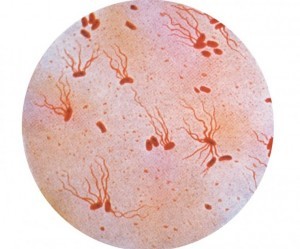A tenacious epidemic of extensively drug-resistant (XDR) typhoid in Pakistan is just one small genetic step away from becoming untreatable—and health experts expect it to spread worldwide.
“It’s a global concern at this point,” Dr. Eric Mintz, an epidemiologist at the Centers for Disease Control and Prevention told The New York Times. “Everything suggests this strain will survive well and spread easily—and acquiring resistance to azithromycin is only a matter of time.” Azithromycin is currently the only antibiotic remaining that treats the infection.
Typhoid fever, caused by Salmonella enterica serovar Typhi bacteria, is endemic to Pakistan, parts of which suffer from poor infrastructure, crowded urban areas, and insufficient access to healthcare. The epidemic caused by the XDR strain—the first of its kind—has been unfolding there since November 2016. It has now affected at least 850 people in 14 districts, according to the latest figures from the National Institute of Health in Islamabad and first reported by the Times. Prior to this epidemic, there were only four known, unrelated cases of such heavily drug-resistant typhoid, occurring in Iraq, Bangladesh, India, and Pakistan.
The XDR strain has already begun spreading outside of Pakistan, with a travel-related case appearing in the United Kingdom.
In a recent report on the strain’s emergence in the journal mBio, infectious disease experts established that it could withstand assaults from five classes of antibiotics used to treat typhoid. They concluded that the strain’s development was a “startling demonstration” of how easily S. Typhi can pick up genetic elements that confer drug resistance, “rendering it XDR and further narrowing treatment options.”
Antibiotics are the only effective treatment for typhoid fever, a systemic infection with varying severity that can become life-threatening. The infection is generally marked by fever, headache, nausea, loss of appetite, and constipation or sometimes diarrhea. The heaviest death tolls are in children younger than age four. About 2 to 5 percent of those infected can become chronic asymptomatic carriers, shedding the bacteria in their feces. The Salmonella Typhi bacteria are typically spread through food or water contaminated with feces.
read more at arstechnica.com
Ask me anything
Explore related questions





